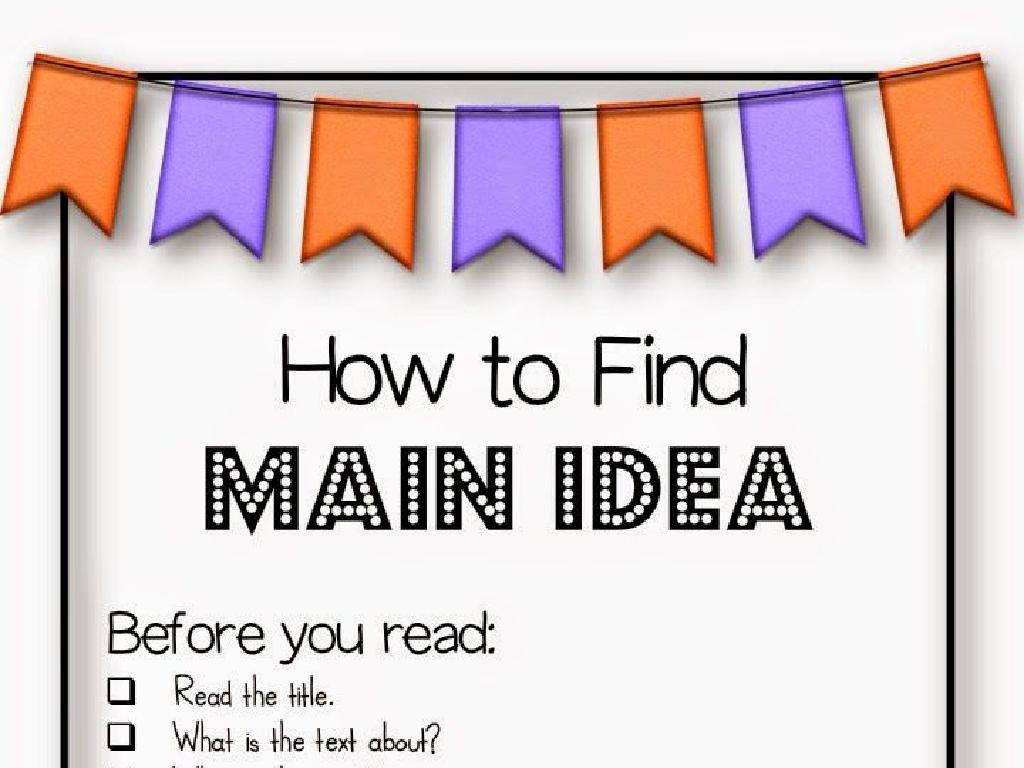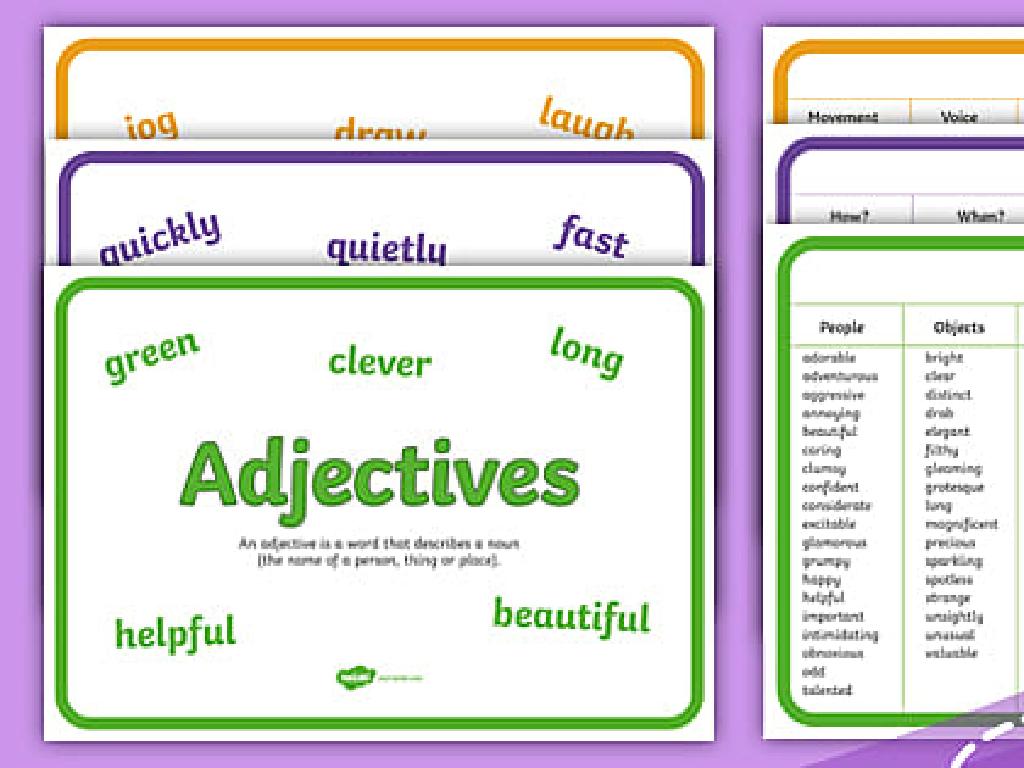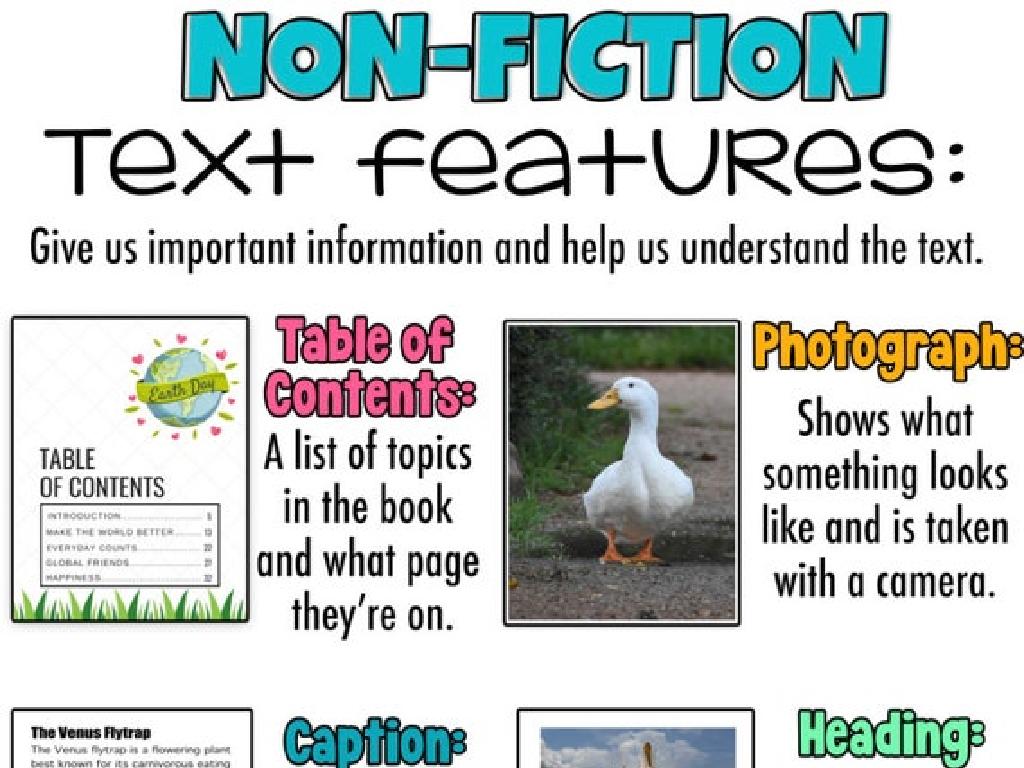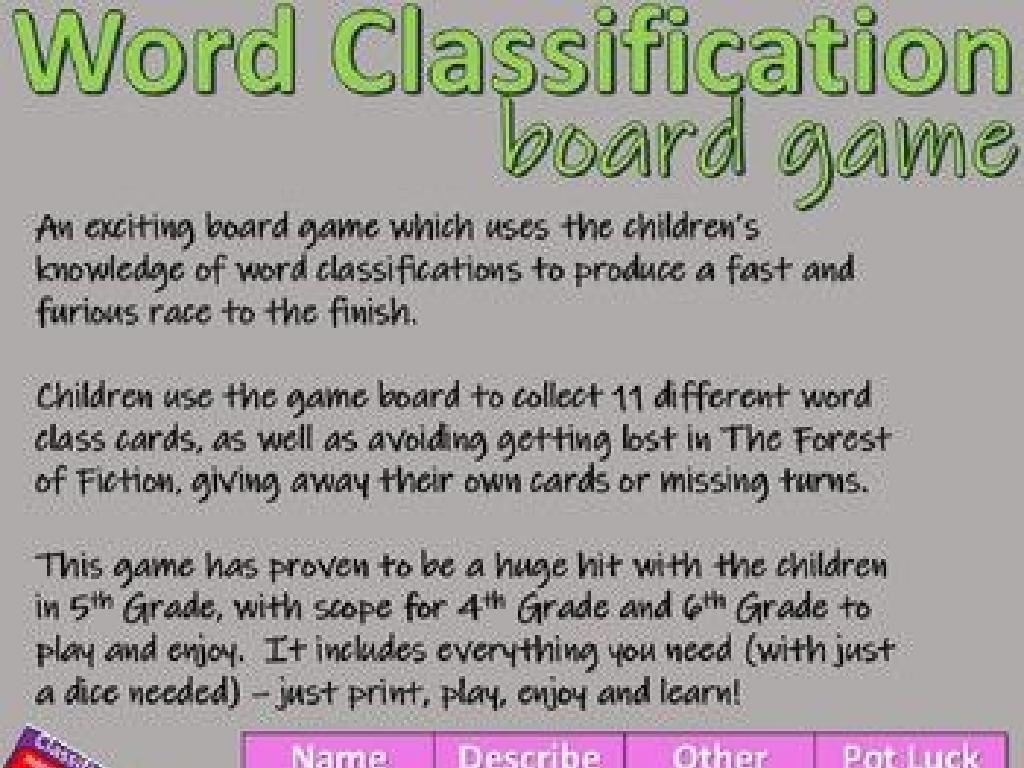Origins Of Islam
Subject: Social studies
Grade: Seventh grade
Topic: World Religions
Please LOG IN to download the presentation. Access is available to registered users only.
View More Content
Origins of Islam: A Journey into World Religions
– Explore World Religions significance
– Focus: Islam’s historical roots
– Islam began in the 7th century in Mecca
– Cultural awareness through religions
– Learning about religions fosters respect and empathy
– Embracing diversity in beliefs
– Recognizing the value of various religious traditions
|
This slide introduces students to the study of world religions, with a specific focus on the origins of Islam. It’s crucial to convey the importance of understanding different religions to appreciate the diverse world we live in. Highlight how Islam, which began in the 7th century in Mecca, has grown to be one of the major world religions. Discuss the significance of learning about various beliefs to promote cultural awareness, respect, and empathy among people of different backgrounds. Encourage students to consider how knowledge of different religious traditions contributes to a more harmonious and inclusive society.
Pre-Islamic Arabia: A Glimpse into the Past
– Geography and culture of early Arabia
– Harsh deserts, nomadic life, and tribal societies
– Social and religious customs pre-Islam
– Polytheistic beliefs, idols, and tribal laws governed life
– Trade routes’ role in society
– Trade routes like the Incense Route were economic lifelines
– Significance of oral poetry
– Poetry preserved history and was a form of entertainment and communication
|
This slide aims to provide students with an understanding of the Arabian Peninsula before the advent of Islam. Emphasize the harsh desert environment and how it shaped the nomadic and tribal culture of the time. Discuss the polytheistic religious practices and the importance of tribal laws in governing social conduct. Highlight how trade routes, especially those for valuable goods like incense, were crucial to the economy and cultural exchange. Lastly, explain the role of oral poetry in preserving history and laws, and as a key form of entertainment and communication in a society where many were illiterate. This background sets the stage for understanding the significant changes that Islam brought to the region.
The Prophet Muhammad and the Rise of Islam
– Muhammad’s early life
– Orphaned early, became a respected trader
– The first revelation
– Angel Gabriel’s message in the cave of Hira
– Muhammad’s message
– Preached monotheism, social justice
– Challenges faced
– Opposition from Meccan tribes, eventual migration
|
This slide introduces students to the Prophet Muhammad, focusing on his early life, the pivotal moment of the first revelation, his core messages, and the significant challenges he encountered. Muhammad’s early experiences as an orphan and a trader in Mecca shaped his character and reputation. The first revelation from Angel Gabriel marks the beginning of Islam, where Muhammad received the message of monotheism and social justice. His teachings challenged the existing social order, leading to opposition from powerful Meccan tribes. This resulted in his migration to Medina, an event known as the Hijra, which is also the start of the Islamic calendar. Encourage students to reflect on the historical context of these events and their impact on the development of Islam.
The Five Pillars of Islam
– Shahada: Faith declaration
– ‘There is no god but Allah, and Muhammad is the messenger of Allah.’
– Salat: Pray five times daily
– Specific prayers at dawn, noon, mid-afternoon, sunset, and night.
– Zakat: Charity to the needy
– Muslims are required to give a portion of their earnings to those less fortunate.
– Sawm: Fasting in Ramadan
– No eating or drinking from dawn to sunset during the 9th month of the Islamic calendar.
– Hajj: Pilgrimage to Mecca
– If physically and financially able, a Muslim must visit the holy city of Mecca.
|
This slide introduces students to the core practices of Islam, known as the Five Pillars, which are essential to the Muslim faith. Each pillar represents a unique aspect of devotion and obedience to Allah. Shahada is the Muslim profession of faith, expressing the monotheistic nature of Islam. Salat involves five daily prayers that structure the day for Muslims and involve specific movements and recitations. Zakat is a form of almsgiving and social welfare. Sawm is observed during Ramadan and is a time for reflection, prayer, and community. Hajj is a pilgrimage that represents unity and equality among Muslims. Encourage students to see these pillars as a way of life for Muslims, integrating their faith into daily actions and social responsibility.
The Quran and Islamic Teachings
– The Quran: Islam’s holy book
– The Quran is considered the word of God (Allah) as revealed to Prophet Muhammad.
– Core teachings and values of Islam
– Emphasizes compassion, justice, and charity among other values.
– Islam’s expansion and historical impact
– From its origins in Mecca and Medina, Islam spread rapidly across continents.
– Understanding Islamic principles
|
This slide introduces students to the Quran, which is the central religious text of Islam, believed to be a revelation from God. Highlight the importance of the Quran in guiding the lives of Muslims and its role in shaping Islamic teachings. Discuss key Islamic values such as compassion, justice, and the importance of community and charity. Explain how Islam spread from the Arabian Peninsula to various parts of the world, influencing cultures, economies, and political systems along the way. Encourage students to reflect on the impact of Islam’s spread on world history. Provide examples of Islamic principles in practice, such as the giving of alms (zakat) and the pursuit of knowledge.
Islamic Civilization and Culture
– Scholars’ contributions to knowledge
– Advances in algebra, medicine, and astronomy
– Understanding the Ummah and art
– Ummah: the Muslim community. Islamic art: geometric patterns, calligraphy
– Trade’s role in culture spread
– Trade routes facilitated the exchange of ideas and cultural practices
– Influence on science, math, literature
– Islamic Golden Age: A period of great achievements in various fields
|
This slide aims to highlight the significant contributions of Islamic scholars in various fields during the Islamic Golden Age. Students should learn about the advancements in algebra, medicine, and astronomy that have had a lasting impact on the world. The concept of Ummah emphasizes the unity of Muslims worldwide, and Islamic art is renowned for its unique use of geometric patterns and calligraphy. Additionally, the role of trade in spreading Islamic culture and the influence of Islam on science, mathematics, and literature should be discussed. Encourage students to explore how these contributions have shaped modern civilization and to recognize the interconnectedness of cultures.
Class Activity: Islamic Civilization’s Legacy
– Research Islamic contributions
– Prepare group presentations
– Pick a topic like mathematics, science, or art
– Discuss global influence
– How do these contributions impact modern society?
– Reflect on learning
– Share what you’ve learned with the class
|
This activity is designed to engage students with the rich history of Islamic contributions to the world. Divide the class into small groups, assigning or allowing them to choose a field of Islamic contribution such as mathematics, science, literature, or art. Each group will research their topic, focusing on key figures, inventions, or ideas that originated from Islamic civilization. They will then prepare a short presentation to educate their classmates on their findings. Encourage students to explore how these historical contributions continue to affect our lives today. After presentations, lead a discussion to reflect on what they’ve learned. This will help students appreciate the interconnectedness of world cultures and the impact of Islamic achievements on global development.






